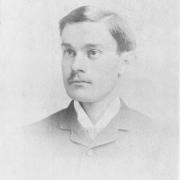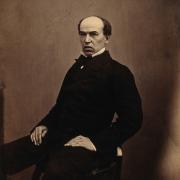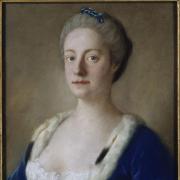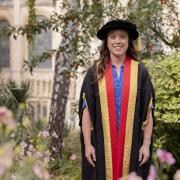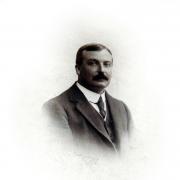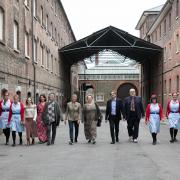On the centenary of its publication, we go in search of the inspiration for a much-loved children's classic and find Kent at its heart
The story of The Secret Garden
On the centenary of its publication, we go in search of the inspiration for a much-loved children's classic and find Kent at its heart
Think of The Secret Garden and your mind instantly harks back to magical memories of children's literature. The title alone recalls a dreamy, sun-filled world of fantasy and make-believe.
As a writer, I have always been fascinated by literary landscapes and, in particular, the features and landmarks authors draw on for inspiration - often from their own lives and experiences. Some settings are obvious and well-documented, while others remain hazy and indeterminate which, for me, makes the detective work all the more challenging and enjoyable.
In the case of The Secret Garden, I stumbled on the story of how it came to be written purely by accident. While researching another writer, I discovered that this enduring classic, written by Frances Hodgson Burnett and published exactly 100 years ago in 1911, is linked to Great Maytham Hall, a splendid Grade-II* house at Rolvenden, near Tenterden.
Hodgson Burnett relied heavily on happy memories of her years as its tenant, as well as her childhood home in Manchester. Born in 1849, she last visited Great Maytham Hall in 1907.
The setting is said to be the background for many of her books. The Making of a Marchioness, published in 1901, includes a character by the name of Mrs Maytham. During her time here, Hodgson Burnett entertained many leading figures from the arts world. Ellen Terry, Henry James and Rudyard Kipling are known to have visited her imposing Kent home.
With its magical quality and timeless appeal, The Secret Garden has spanned the decades and the generations. The story is simple. Two children are transformed by the discovery of a secret garden which becomes an integral part of their lives. Time passes and they watch transfixed as the garden bursts into life, weaving its magic on all who encounter it.
Following Hodgson Burnett's death in 1924, a memorial to her, in the form of statues of a boy and a girl, was erected in New York's Central Park. She emigrated with her family to the United States in 1865 but returned to Britain on frequent occasions throughout her life. Her other work includes another classic, Little Lord Fauntleroy, published in 1886.
Not surprisingly, Hodgson Burnett's best-known work has been given the celluloid treatment. The Secret Garden is told in two film versions - the most recent released in 1993, with the book's Gothic atmosphere thankfully intact. Maggie Smith gives a memorable performance as the tyrannical housekeeper.
Great Maytham Hall's miraculous rescue reads like a chapter from The Secret Garden itself
Great Maytham Hall may forever be associated with one of the greatest examples of children's literature but there is a good deal more to its story than that. The present house, designed and remodelled by Sir Edwin Lutyens, is as old as Hodgson Burnett's book, standing on the site of the old 18th-century hall and including part of it.
In typcial fashion, Lutyens worked closely with the horticulturist Gertrude Jekyll, who was responsible for designing and landscaping the grounds. The original building, which was begun in 1721 and remained roofless through lack of money until 1760, had strong links with colourful myths and legends.
There are wonderfully romantic tales of a smugglers' tunnel running from the cellars of the old Hall down to the woods. It was even suggested that a ghost could be seen rising from a nearby pond.
The house you see today was commissioned by John Tennant, Liberal MP for Berwickshire, who asked Lutyens to create a substantial family residence that was commensurate with his status in life. Lutyens accepted the challenge, transforming the old house which had been partially destroyed by fire in 1893.
Working with Jekyll, his ethos at the time was to bring an element of the garden into the design of the house. He ensured that the principal rooms took advantage of the impressive south-westerly views of Great Maytham's grounds and the lush countryside of the Rother valley.
Tennant lived at Great Maytham Hall until his death in 1935. At that time the Maytham Estate extended to more than 1,300 acres. Today that figure is much more modest and 17 acres of formally designed gardens and grounds surround Great Maytham Hall, with just one gardener employed to look after them.
During the Second World War the house was requisitioned by the Army. Great Maytham Hall became a billet for the Medical Corps and Nissan huts could be seen strewn about the grounds. One day during this critical time in our long history, a bomb fell on the Estate, narrowly missing the main house but destroying the greenhouses and part of the garden.
Photographs capture soldiers repairing the damage. Maintaining the wartime theme, Great Maytham Hall was even chosen as the location for the General Headquarters of the French forces in the 1958 film Dunkirk, starring John Mills and Richard Attenborough.
By the mid-1950s, following a succession of different owners, the house had fallen into disrepair. The grounds, too, were in a sorry state, with weeds and brambles threatening to engulf what had been Great Maytham's pride and joy - its treasured garden. Its miraculous rescue reads like a chapter from The Secret Garden itself.
In 1955, quite by chance, Anthony Du Gard Pasley, an influential landscape architect, missed his turning in Rolvenden and, looking for a suitable gateway to reverse his car, found himself gazing down Great Maytham's stately drive at the derelict house and its overgrown garden.
He couldn't believe it. Here was a Lutyens masterpiece - ravaged by time and the elements, abandoned and unloved. Du Gard Pasley discovered to his horror that a planning application had been made to demolish Great Maytham Hall and build houses on the site.
He led a successful campaign to reject the plans and in 1961 the Estate was eventually acquired by the Mutual Households Association, later the Country Houses Association. Great Maytham was converted into apartments for members of the armed forces who were returning to the UK.
Today, the Estate is owned and managed by the Sunley Group, with 17 leasehold apartments occupied by captains of industry and knights of the realm - among other residents who enjoy its serenity and rarified atmosphere. There are charity concerts and social functions and Rolvenden Bridge Club meets here once a week.
The world has changed virtually beyond recognition since Frances Hodgson Burnett lived at Great Maytham Hall. But the place still conveys a strong sense of constancy. It is gratifying to know that deep in the Kent countryside lies an enchanting garden that was once the outdoor workroom of a renowned Ango-American writer.
Here, in the old walled rose garden, on warm summer days, she would set up her table, chair and protective sunshade. When it rained she would retreat to the comfort of the gazebo.
Exactly 100 years later, the same walled garden continues to evoke the magic of her writing - visitors view it by appointment and couples choose it as the venue for civil marriage ceremonies. It remains a secret, special place, immortalised in literature and undisturbed by time.
FIND OUT MORE
Great Maytham Hall
Rolvenden, Cranbrook TN17 4NE
01580 241346
The gardens can be viewed by appointment (groups of six or more). As part of the National Gardens Scheme, the gardens are open to the public 2pm-5pm on Wedneday 8 June.





